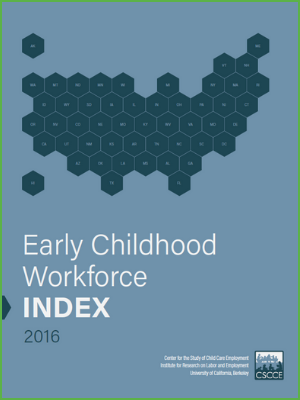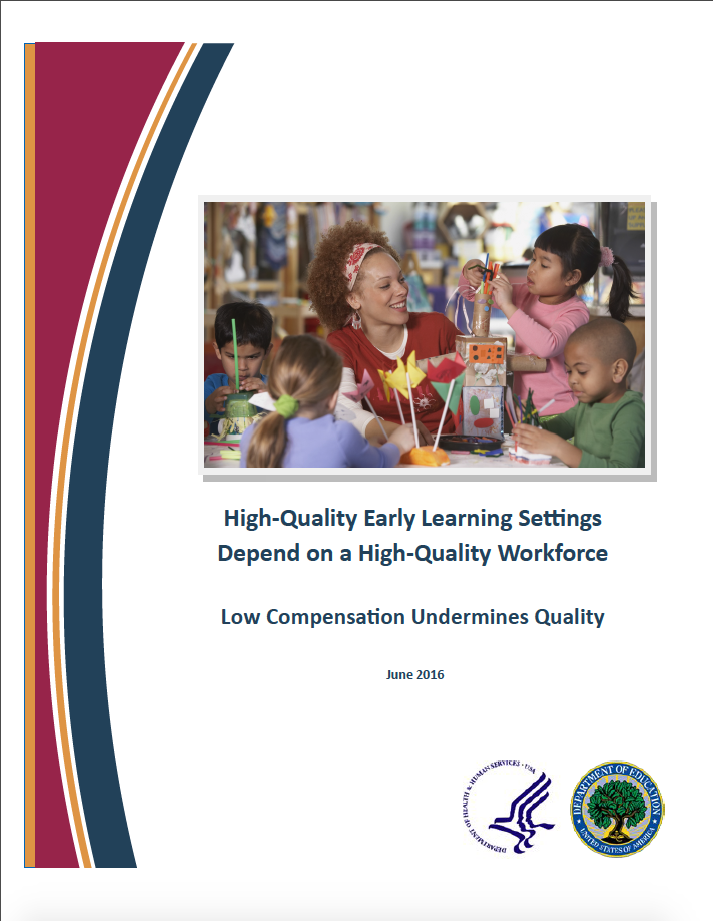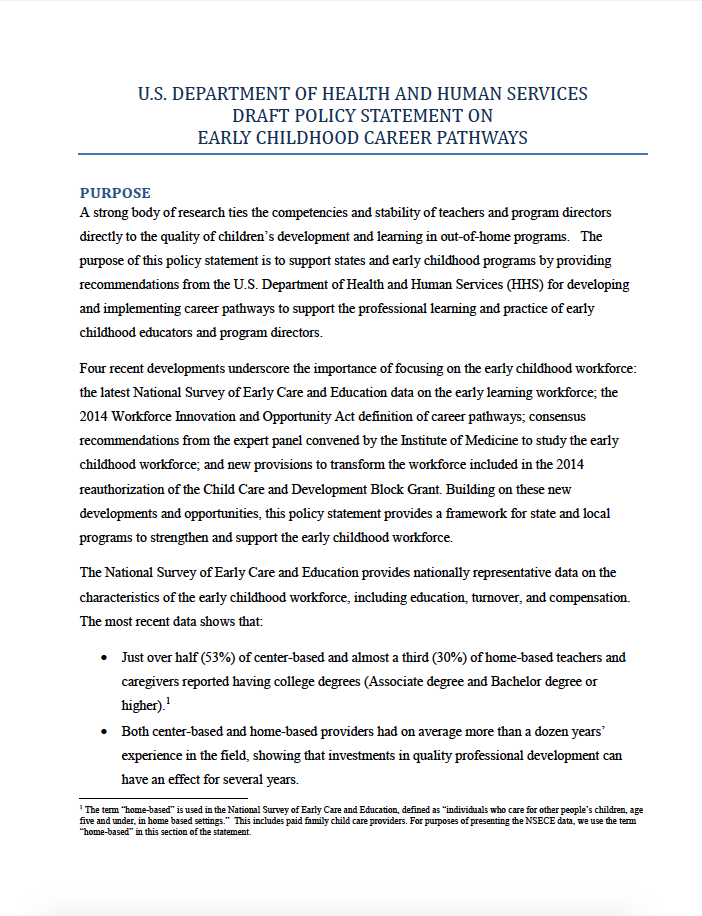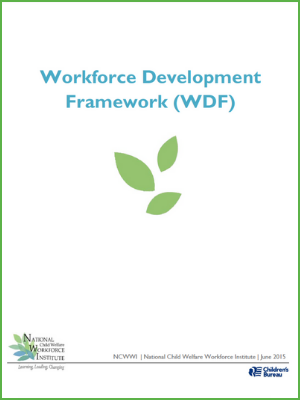Building a Strong Infant-Toddler Workforce
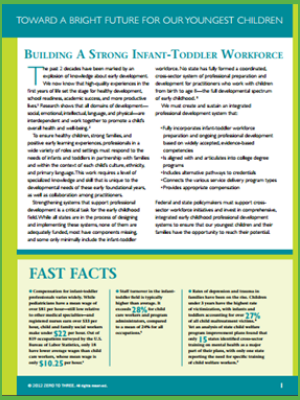
This report focuses on strengthening systems that support professional development as a critical task for the early childhood development field. The report advocates for an integrated professional development system that:
- Fully incorporates infant-toddler workforce preparation and ongoing professional development based on widely accepted, evidence-based competencies;
- Is aligned with and articulates into college degree programs;
- Includes alterative pathways to credentials;
- Connects the various service delivery program types;
- Provides appropriate compensation.
The report defines an early childhood professional development system that includes the infant-toddler workforce, highlights the six essential policy areas that need to be addressed and shares policy recommendations in context.
Authors: Year of Publication:2012
www.zerotothree.org


